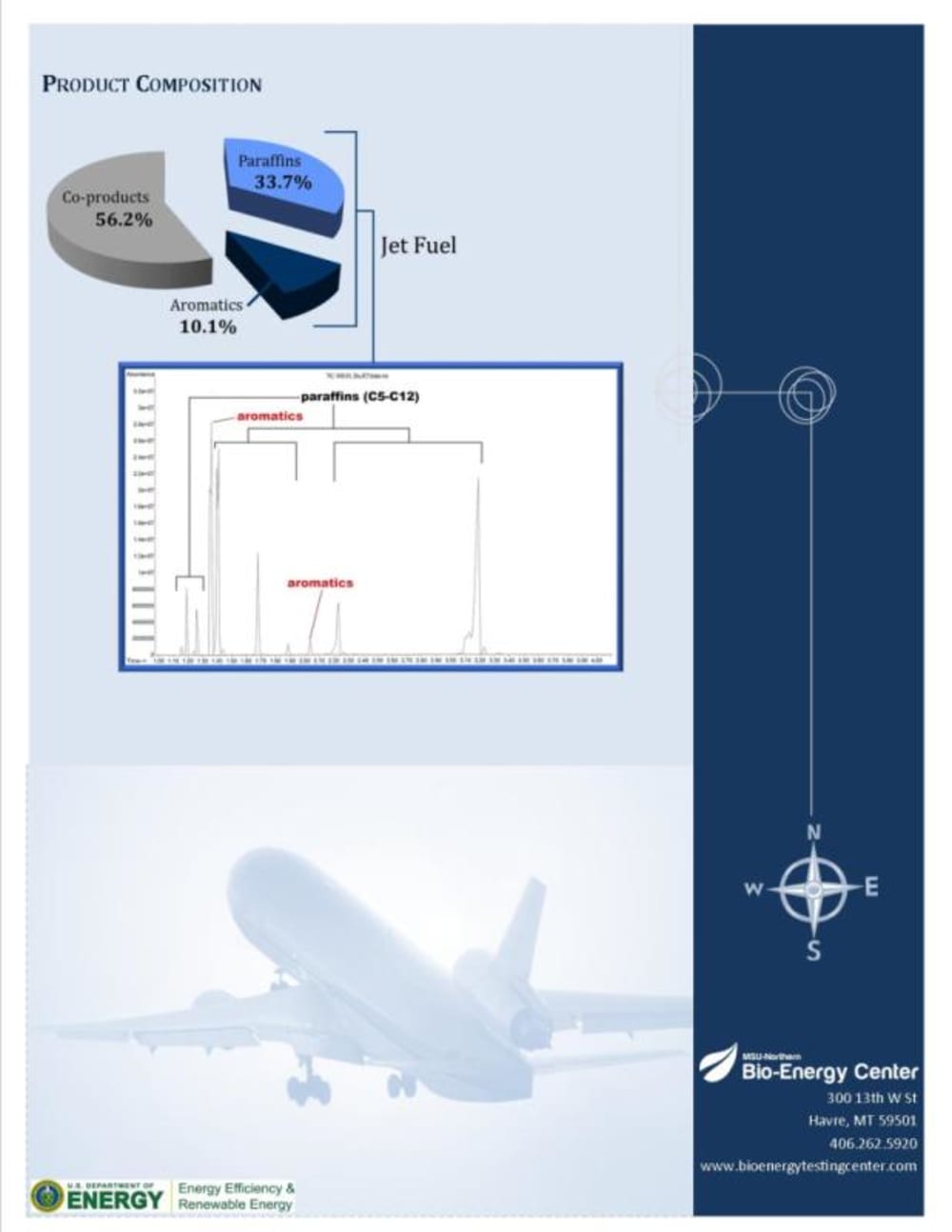
Breakthrough Bio Fuel and Bio Chemical Production Process
Overview: Researchers at Montana State University – Northern have developed a low energy chemical cracking process which converts plant oils to advanced transportation fuels (drop in) and oleo-chemical precursors. This patented metathesis process can utilize a diverse source of feedstocks including non-food oil seeds. The most compelling aspect of this technology is that it yields high-aromatic products which can meet or exceed jet fuel requirements. Additional novel aspects of the process are that it occurs at both low temperature and low pressure and does not utilize water.
Patented Process
Background: To date, synthetic paraffinic kerosene (SPK) and hydro-processed esters and fatty acids (HEFA) produced by a Fischer-Tropsch (FT) method and hydrotreating of natural oils, respectively are the only advanced renewable jet fuels that have been certified by ASTM. While SPK and HEFA are both non-oxygenated, containing carbon chain lengths comparable to conventional jet fuel, they have deficiencies in terms of fuel properties mainly due to the lack of aromatic hydrocarbons. This impart limits their blending ratio. Moreover, both SPK and HEFA are produced from high energy input processes.
The new process discussed here is an attractive alternative to these current methods because the product contains up to 27% aromatic hydrocarbons and requires mild conditions to achieve good conversion. Additionally, the process produces a high value co-product -mid chain triglycerides - that can be marketed to the oleo-chemical industries. The process utilizes known components, common inexpensive inputs and continuous flow reactions. Yields are approximately 70%, non-optimized.
?
Benefits of the process:
• Yields fuel with 29% aromatics content which it makes it purely a drop in fuel
• Low energy Input
• Low temperature (less than 100 °C)
• Low Pressure (less than 8 bars)
• Low Carbon Footprint
• Does not utilize water Versatile Process, yields different transportation fuels without any change to equipment
• Co-products specific for oleo-chemical industry
• Flexible feedstocks
• Process produces no waste
This is the research of Dr. Nestor Soriano and collaborators Dr. Randall Maglinao and Akash Narani at the Bio-Energy Center at Montana State University – Northern
www.bioenergytestingcenter.com.
Funding for this technology was provided by the US Department of Energy.
-
Awards
-
 2012 Top 100 Entries
2012 Top 100 Entries
Like this entry?
-
About the Entrant
- Name:Gary Bloomer
- Type of entry:teamTeam members:Nestor Soriano, Ph.D.
Randall Maglinao, Ph.D.
Akash Narani, PE - Patent status:pending





